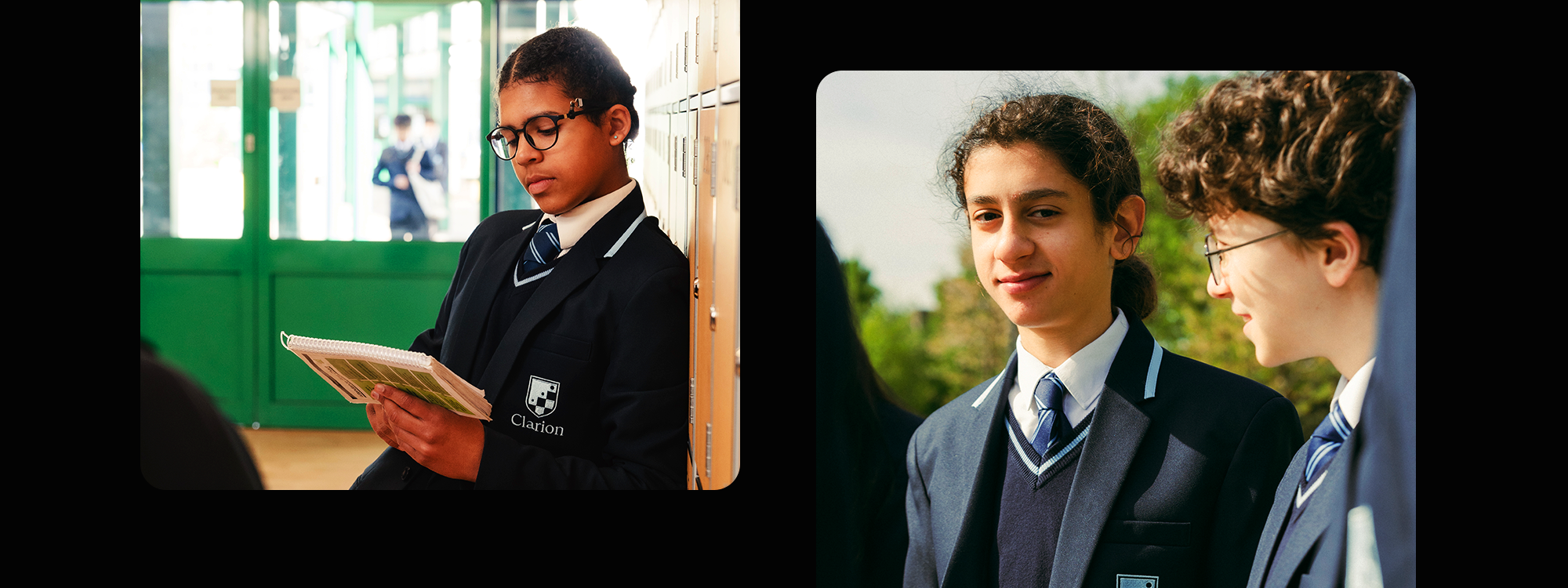- Home
- School Life
- Academic Journey
- Music Curriculum Overview
"Research shows that at least some musical education has a positive impact on social and cognitive development of children and these effects are long lasting – better hearing, better motor skills, improved memory, better verbal and literacy skills."
Alan Harvey, Musician and Neuroscientist
Students will develop a love for Music through the three fundamental activities of musical participation - playing, composing and listening to music. GCSE Music is the obvious academic choice for those who enjoy performing, whilst Music Technology provides a musical outlet for those who prefer to create music via a computer. At KS5, there are several pathways possible: Music A Level for those who do well at GCSE, BTEC Music Performance and BTEC Music Technology for those who prefer a less academic route into music (and possibly Higher Education) and/or wish to gain relevant skills towards employment in the thriving, multi-faceted UK Music Industry.
Impact
- Students who thrive in the MiSST scheme have the opportunity to perform in orchestras with other schools, attend the Saturday MiSST Academy and even attend an intensive three-day residential course in the Summer Term. Beyond MiSST, however, all classes spend some time singing and studying basic keyboard skills, and most will have the opportunity to experience music technology in our Mac suite.
- To have had the experience of learning a musical instrument and, through that experience, learning to appreciate and understand a wide range of musical expression.
Implementation
-
All students should learn a new musical instrument starting in Year 7 and aim to achieve grade 2 at the end of their KS3 music education.
-
More able students will take 1 to 1 instrumental lessons to stretch and challenge their learning. Potential to learn more than one instrument.
-
Verbal feedback is provided in every practical lesson. A practical assessment is at the end of each term to check students’ ability to play the instrument.
-
Pupils’ progress in their individual lessons will be assessed by their peri teachers. They will then enter graded exams (ABRSM) when they are ready.
Academic Journey - KS3
Year 7 |
|
| Half Term 1 - 2 | Half Term 3 - 4 |
| What is pulse and rhythm? Patterns in Structure, Texture, Rhythm | How do we create a melody? Patterns in Tonality and Melody (folk) |
| Half Term 5 - 6 | |
| What is harmony? Band Musicianship 1: Four Chords Songs (pop) | |
Year 8 |
|
| Half Term 1 - 2 | Half Term 3 - 4 |
| What is world music? Devices in Structure, Texture and Rhythm (West Guinea) | How is melody, harmony and texture used in Baroque music? Devices in Melody, Harmony and Texture (classical) |
| Half Term 5 - 6 | |
| How is melody and harmony used in the Blues? Band Musicianship 2: The Blues | |
Year 9 |
|
| Half Term 1 - 2 | Half Term 3 - 4 |
| What is Electronic Dance Music? Processes in Structure, Texture (pop) | How is music composed for the stage and screen? Processes in Sonority |
| Half Term 5 - 6 | |
| How is melody, harmony and rhythm used in popular music? Band Musicianship 3: Songs for a Better World |
Academic Journey - KS4
Year 10 |
|
| Component 1: Repertoire and Preparing for Performance | Component 2: Free composition project |
| Component 3: Appraising - Forms and Devices, Music for Ensemble, Film Music, Popular Music | |
Year 11 |
|
| Component 1: Solo and Ensemble Performance | Component 2: Composing to a Brief |
| Component 3: Appraising - Feature of Style, Bhangra, Sound Production Techniques, Fusion |
Extra Curricular Activities
KS3
- String Ensemble
- School Choir
- Band Sessions
- Individual lessons: Piano, Violin, Viola, Clarinet, Singing, Guitar, Drums
KS4
- String Ensemble
- School Choir
- Band Sessions
- Individual lessons: Piano, Violin, Viola, Clarinet, Singing, Guitar, Drums
- Chamber music group
- Grade 5 Theory lessons
Trips
KS3
St Jude’s Prom
KS4
LSO KS4 concert
LPO Bright Sparks
ARP
London Symphony Orchestra - Relaxed Concert




